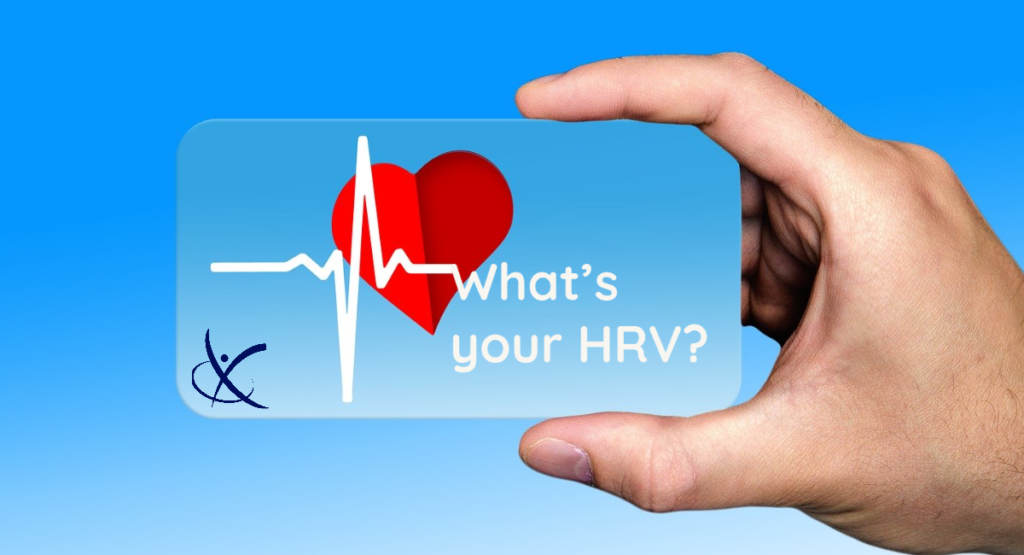How to Assess Your Health In Real-Time
Using Heart Rate Variability to Identify a Healthy, Balanced System
To understand how HRV can operate as such a powerful metric, we must first understand a bit more about it. If you take a look at a quintessential heart rate monitor (EKG), we see a series of spiked lines going up and down. Each group of lines will represent one specific heartbeat with a short break before the next group. HRV measures the change in time (in milliseconds) between each of those groups, or between each heartbeat. Conventional wisdom might assume we want to measure that time interval between beats to make sure they are equal, but that is quite the opposite of what we want. Ideally, we want those time intervals to be different between each beat and that represents HRV. The variance between each beat is key here and a higher HRV represents a healthier individual who is more ready to handle physical stress. Put simply, we don’t want even time between each heartbeat; we want to see variances instead. The reason for this comes from the Autonomic Nervous System (ANS) which is the control center for involuntary actions of the human body.
The ANS is made up of the Sympathetic Nervous System (SNS) & the Parasympathetic Nervous System (PNS). The SNS is responsible for our “Fight or Flight” response, where things like heart rate and response to stress are controlled. On the other hand, the PNS is responsible for the “Rest and Digest” response which controls things like digestion, internal organ function, hair and nail growth, etc. These two systems within the ANS function as antagonists of one another to keep your body in balance. As a result, they are both constantly sending opposing signals to your body to regulate system function, and more specifically they are constantly sending signals to your heart to tell it to speed up or to slow down. For this simple reason, there will always be fluctuations in heart rate at any given moment. The SNS is constantly telling your heart to speed up and get ready while the PNS is constantly telling it to slow down and rest. A healthy balanced system receives input from both systems equally and thus, will constantly be regulating up or down. And again, this is what is responsible for those tiny changes between beats, and what makes up our HRV.
Now we know why we have a variance between heartbeats, and we also know that it is important to have that variance. So how does that relate to health? A higher HRV is associated with a healthier physical body with respect to physical stress because it means your body is sensitive to both SNS and PNS input equally. This represents a healthy balance that is responsive and more importantly adaptive to the physical environment you are in. When your body undergoes stress it must make certain changes, and a higher HRV means your body is more adept at making those necessary changes to keep you functioning correctly. For this reason, we associate a higher HRV with someone who is “ready to go” because their system is functioning correctly.
A low HRV, on the other hand, generally means one branch of the ANS is dominant and your body is prioritizing one input over the other. This can be good, or bad. For instance, during periods of high physical stress, like going to the gym, or playing soccer, or running a race, the SNS is going to take over and ensure that your body is prioritizing blood flow and muscle function of the working areas. It cares less about digestion at that time, so it is expected to see increased input from the SNS and this is a healthy response. However, if you are home watching TV, or sleeping, or doing something relatively inactive, then we should expect a higher HRV and don’t want to see the SNS input dominate. If the SNS is more active at rest, and your heart rate increases, which will decrease your overall HRV, then that is a sign that your body is not balanced and something isn’t right. This is usually indicative of something that causes your body to be working harder than it should have to. It could be anything from dehydration, physical injury, or general fatigue to something more serious like an underlying illness such as the common cold, or COVID-19. Regardless, it means that you are most certainly not ready to handle certain levels of physical stress/activity and some changes should be made.
Your body is working constantly, and your heart is beating constantly, and the better we are at tracking these things, the more effective we can be at identifying potential issues. HRV is an excellent metric to use because it gives us the best information at rest when we can predict what we “should” be seeing. When combined with other subjective measures, we can narrow in on the cause and see if it is a hydration issue, a lack of sleep, or if you are on the brink of the common cold, or something more sinister. Thanks to some new programs, we now have the ability to measure this data and give people suggestions in real-time. There is no waiting for tests to come back. We can look at the data and know if the person is ready for activity, or if they should alter their training schedule, or even take some more time to rest. This takes the notion of working “smarter not harder” to a whole new level.
Happy Training!
